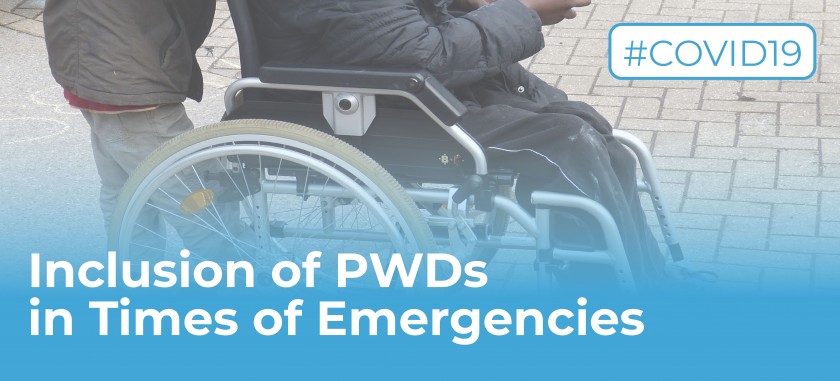
What does the COVID-19 outbreak mean for the disability community?
The world at large is taking action to contain COVID-19; however, some populations may be affected more than others. Persons with disabilities (PWDs) are one of the groups at a higher risk of exposure, contracting and complications from COVID-19. Disability does not leave one prone to diseases instead persons with disabilities majorly have underlying pre-existing health conditions that make the disease more dangerous for them, thus their capacity to respond to COVID-19 is limited.
The United Nations Convention on the Rights of Persons with Disabilities under Article 11 provides for state to ensure safety and protection of persons with disabilities in situations of risks including humanitarian emergences and occurrence of natural disasters. This could range from ensuring accessible information, health care, and adequate living standards.
LHRC concerns on inclusive and accessible measures against the COVID-19 pandemic, persons with disabilities face obstacles to access preventive and protective measures. During this time of crisis, the government and responsible stakeholders should take measures and protective actions to protect the rights of PWDs and mitigate the impact of COVID -19 to the group. LHRC recommends the following;
- Discourage Prejudice, Stigma and Discrimination; health workers and community at large should work within the ambits of equality and avail those with disabilities equal services as those without any forms of disability.
- Ensure Access to Information to PWDs; information is essential so that they can make their own decisions and learn how to access services and other basic needs during the crisis.
Articles 4 (1) (h) and 9 (1) (b) of the United Nations Convention on the Rights of Persons with Disabilities together with section 38 of the Persons with Disabilities Act, No. 9 of 2010 provides for accessible information and assistive technologies as well as other forms of assistance, support service and facilities including emergency services. There is yet inaccessible information and communication on the preventive measures and assistance services to persons with disabilities during the pandemic. Information and communication should also be in simple plain language and across accessible formats. Importantly necessary physical communication must be safe and accessible.
- Provide PWDs with Socio-economic Support; persons with disabilities are among the people living in poverty where it has been identified that the impacts of COVID-19 are mostly higher in lower socio-economic populations. The government should address economic hardship during the crisis so that persons with disabilities are not faced with more barriers in attaining their basic needs. Additional protective measures must be taken for people according to their different types of disabilities.
- Avail PWDs with Equal Access to Health Care; Article 25 of the United Nations Convention on the Rights of Persons with Disabilities together with section 26 of the Persons with Disabilities Act, No. 9 of 2010 allow for attainable standards of health care services without discrimination on basis of disability. Therefore, the government should ensure that barriers towards basic health services either due to discrimination, environmental limitations, communication, costs or/and limited insurances are addressed.
- Provide Social Support to PWDs; under normal circumstances persons with disabilities live in undignified conditions and have poor access to basic needs, some measures like self-isolation and social distancing are making it impossible for persons with disabilities that rely on others to eat, walk, bathe, etc. Even during quarantine, supportive assistances, physical and communication accessibility must be ensured by guiding health care workers and family members to continue to safely support persons with disabilities.
- Gather and Disseminate Data on the Impact of COVID-19 on PWDs; there should be reliable and public data on the impact of COVID-19 to persons with disabilities.
- Consider Consultation of PWDs in the Decision-Making Process; the government must consult with people with disabilities regularly to make sure strategies meet their basic needs and that all preparedness and response plans are inclusive and accessible to persons with disabilities.
LHRC calls upon stakeholders to adopt measures that are inclusive and ensure effective participation and protective of the person with disabilities. The government should guarantee all measures put in place are strictly necessary and proportionate to the situation and that they are not arbitrary or discriminatory to any segment of population and at all times respect human rights and dignity.
